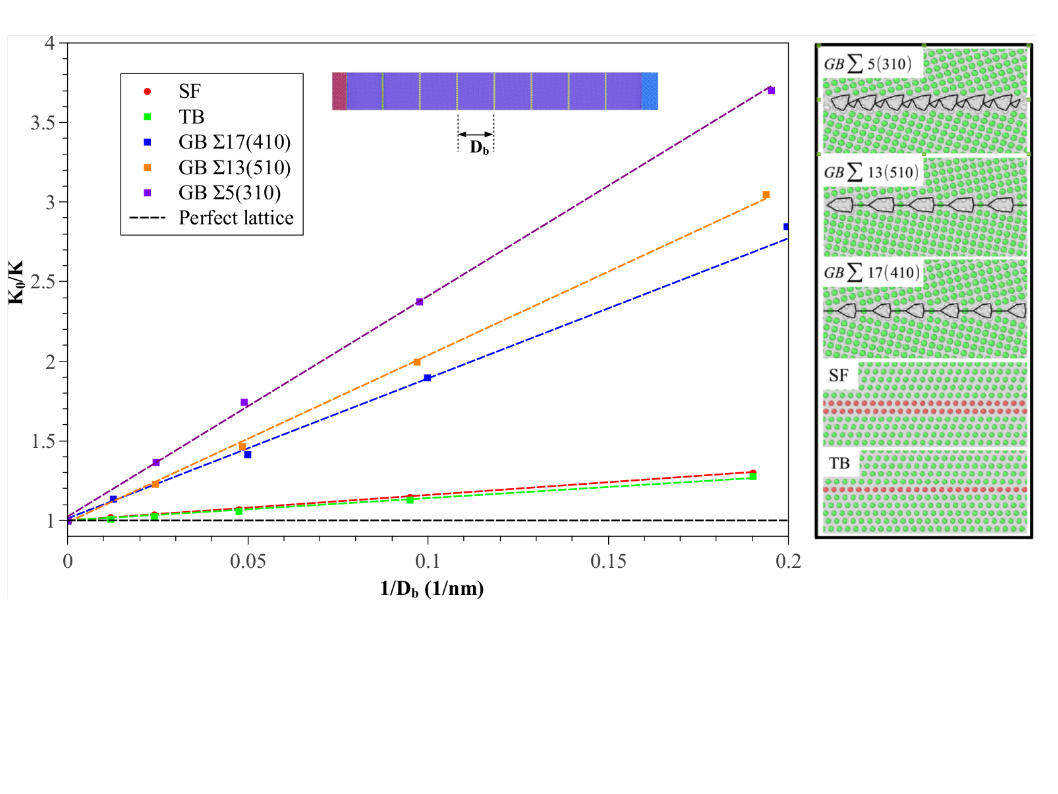Miniaturized and nano-structured crystalline systems have gained a lot of attention as potential candidates for thermoelectric applications because of their low thermal conductivities. It has been shown that, the thermal conductivity of crystalline materials at small scales can be drastically reduced by the presence of free surfaces, internal defects, and boundaries where the system sizes or the constituent’s micro-structural sizes are comparable to the phonon mean free path. A fundamental challenge facing the applicable design of these miniaturized/nano-structured crystalline systems is a lack of a quantitative determination of phonon scattering at crystalline boundaries and free surfaces.
we have quantitatively studied phonon-crystalline boundaries scattering and its effect on the overall lattice thermal conductivity of crystalline bodies using atomistic simulations. Various types of crystalline boundaries such as stacking faults, twins, and grain boundaries have been considered in FCC crystalline structures. Accordingly, the specularity coefficient has been determined for different boundaries as the probability of the specular scattering across boundaries. Our results show that in the presence of internal boundaries, the lattice thermal conductivity can be characterized by two parameters: (1) boundary spacing and (2) boundary excess free volume. We show that the inverse of the lattice thermal conductivity depends linearly on a non-dimensional quantity which is the ratio of boundary excess free volume over boundary spacing.

Normalized inverse lattice thermal conductivity versus inverse boundary inter-spacing for different types of crystalline boundaries.

